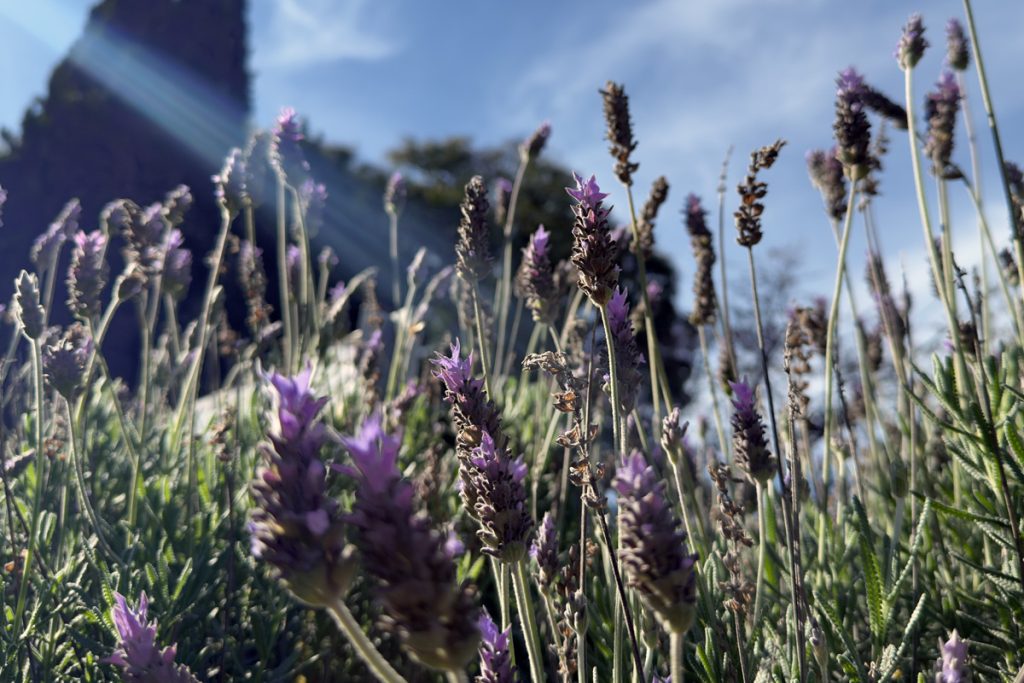There is a kind of noticing that only happens in stillness.
Foraging is not just a way to gather ingredients — it is a form of listening. To the season. To the land. To yourself.
Some flowers bloom where no garden reaches, rooted in forgotten fields, lining the edges of woodland paths, leaning softly toward riverbanks. They ask nothing but attention. They offer, in return, color, nourishment, and a kind of quiet companionship.
Below, five places to forage where edible flowers hide in plain sight — and the lessons they offer if we move slow enough to hear them.
1. Meadow edges
Where sunlight softens the grass and opens petals to the sky.
At the edge of a meadow — that liminal place between field and forest — a different kind of bloom takes root. Here, among nodding grasses and humming bees, grow red clover, wild violets, yarrow, and Queen Anne’s lace.
These flowers are sun-drinkers. Their petals are open and generous, their scents delicate and fleeting, best gathered in early morning before the heat claims them.
Best for: Floral infusions, fresh salads, wild teas
Bonus: Buzzing bees mid-blossom—watch them dance among flowers
Tip: Harvest only what’s abundant. Leave enough for pollinators and reseeding.
What it teaches: That beauty lives in the threshold. That what grows on the edge is often most resilient.
2. Woodland trails
Where dappled light and quiet soil nourish shy blossoms.
Step quietly into the woods, and the flora changes its voice. No longer bold, the blooms here are small, careful, observant — sweet woodruff, wild geranium, chickweed, and garlic flowers whispering in leaf litter.
The cool, filtered light gives them subtler flavors. More herb than flower. More shadow than sun.
Best for: Savory butters, light infusions, herbal vinegars
Bonus: Woods awaken all the senses — notice the damp earth, the filtered air, the hush.
Tip: Many woodland flowers have toxic doppelgängers. Only harvest what you know.
What it teaches: That humility can be fragrant. That some gifts arrive softly, and are no less vital.
3. Beside streams and rivers
Where water sings and roots drink deeply
Follow the water. You’ll find elderflower blooming like lace in the trees, wild mint pushing up from wet banks, and sometimes the blushing blue of forget-me-nots near moss-covered stones. Marsh mallow and watercress blossoms also wait for you there.
The scent of these flowers is often fresh, almost green. They lend themselves to cordials, syrups, or cooling summer drinks.
Best for: Herbal tonics, savory butters, flower syrups, fritters
Bonus: The rhythm of water soothes the mind. Forage slowly. Let your breath match the current.
Tip: Never harvest near polluted water or drainage canals.
What it teaches: That nourishment is not just what we take, but how we receive. That clarity flows from stillness.
4. Abandoned fields and forgotten gardens
Where time pauses and nature takes back the plot
Abandoned orchards. Overgrown gardens. Forgotten farmland. These places are archives of past intentions — and among their tangled rows you might find calendula, nasturtiums, borage, or the frilled stars of fennel flower. In regions once farmed or tended, you’ll find hardy survivors: rosemary, sage, and lavender among them — plants that outlasted their caretakers.
They grow unbothered, untamed. They volunteer themselves to the wild.
Best for: Bold petals, sweet and peppery flavors, natural food dyes
Bonus: Sometimes you’ll find heirloom or forgotten varieties—like botanical archaeology
Tip: Look near old stone walls, abandoned homesteads, or the edges of ancient orchards. Always ask permission on private land and respect what remains.
What it teaches: That the things we forget may still bloom. That abundance can rise from neglect.
5. Urban wilds & liminal spaces
Where the forgotten edges still bloom with unexpected offerings.
Not all foraging happens far from home. Some of the most joyful discoveries happen where you least expect them — along city fences, gravel paths, sidewalks and vacant lots. Here you might meet elderflowers, wild rose, mugwort, purslane or creeping dandelions that silently persist.
Best for: Unexpected flavors, wild ferments, edible decorations
Bonus: Surprise. The kind of joy that comes from noticing what others pass by.
Tip: Only forage away from roads and sprayed zones; look for areas that seem least handled
What it teaches: That life insists. That magic hides in overlooked places.
Before you forage: a soft reminder
- Know your flowers. Use a trusted guide or go with someone experienced.
- Forage legally and ethically. In many regions, wild foraging may be restricted – get permission. Never take endangered species.
- Respect the ecosystem. Don’t trample soil. Leave roots intact.
- Harvest mindfully. Take only what you need—leave enough for pollinators and next bloom.
From field to table: gentle ideas
- Chamomile, steeped into a calming milk or scattered over citrus desserts.
- Wild rose petals, folded into soft cheese or frozen into ice cubes for floral drinks.
- Yarrow, infused into oil or blended into herbal salt.
- Calendula, dried and crumbled into soups or golden rice.
And still, a bowl of gathered petals may be enough. A reminder that beauty, when noticed, already feeds something within.
Further reading & tools
- The Forager’s Calendar by John Wright and Wild Remedies by Rosalee de la Forêt and Emily Han (Note: I may receive a small commission if you choose to buy through this link, at no extra cost to you.)
- Local foraging maps or apps like PlantNet or Seek by iNaturalist
Final words
To forage is not simply to gather.
It is to learn the names of what grows around you. To kneel down. To see not just a flower, but a relationship. To find, perhaps, a part of yourself among the petals.
The wild doesn’t ask for perfection — just your attention.
This guide is part of our series on wild edible flowers. Read the ethics, joy, and art of foraging here.
